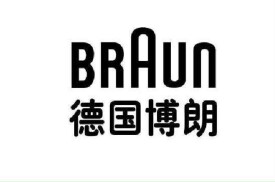優良設計
優良設計
德國博朗(布勞恩)在工業設計史的地位與其經典的設計風格是分不開的,早年與烏爾姆造型學院的合作,是設計直接服務於工業的典範。這種合作產生了豐碩的成果,使布勞恩的設計至今仍被看成是優良產品造型的代表和德國文化的成就之一。
現代氣息、簡約、純正和高品質是出色產品的特徵,這些產品應該是“出色的工具,而不只是夢境中的背景板”。博朗設計從不以觸目、突兀和炫耀為特徵,而是追求清晰和簡約的風格。
博朗根深蒂固的一條原則就是:個性化設計高於一切,設計者必須盡全力讓產品更加個性化,更加實用。博朗全球設計總監Peter Schneider認為:如果設計者們了解當今世界、講多種語言、接近大眾、理解他們的願望,那麼他們就為未來做好了準備。
博朗的設計理念源於1955年,經過幾十年的發展完善,這一特點鮮明、注重功能的設計風格被設計大師迪特·拉姆斯(Dieter Rams)概括總結為產品設計的十原則:
1、出色的設計是需要創新的。它既不重複大家熟悉的形式,但也不會為了新奇而刻意出新。
2、出色的設計創造有價值的產品。因此,設計的第一要務是讓產品儘可能地實用。不論是產品的主要功能和輔助功能,都有一個特定及明確的用途。
3、出色的設計是具有美學價值的。產品的美感以及它營造的魅力體驗是產品實用性不可分割的一部分。我們每天使用的產品都會影響著我們的個人環境,也關乎我們的幸福。
4、出色的設計讓產品簡單明了,讓產品的功能一目了然。如果能讓產品不言自明、一望而知,那就是優秀的設計作品。
5、出色的設計不是觸目、突兀和炫耀的。產品不是裝飾物,也不是藝術品。產品的設計應該是自然的、內斂的、為使用者提供自我表達的空間。
6、出色的設計是歷久彌新的。設計不需要稍縱即逝的時髦。在人們習慣於喜新厭舊、習慣於拋棄的今天,優秀的設計要能在眾多產品中脫穎而出,讓人珍視。
7、出色的設計貫穿每個細節。決不心存僥倖、留下任何漏洞。設計過程中的精益求精體現了對使用者的尊重。
8、出色的設計應該兼顧環保,致力於維持穩定的環境,合理利用原材料。當然,設計不應僅僅局限於防止對環境的污染和破壞,也應注意不讓人們的視覺產生任何不協調的感覺。
9、出色的設計越簡單越好。
10、設計應當只專註於產品的關鍵部分,而不應使產品看起來紛亂無章。簡單而純粹的設計才是最優秀的!
Good design is innovative.
Good design makes a product useful.
Good design is aesthetic.
Good design helps us to understand a product.
Good design is unobtrusive.
Good design is honest.
Good design is durable.
Good design is consequent to the last detail.
Good design is concerned with the environment.
Good design is as little design as possible.
Back to purity, back to simplicity
Dieter Rams: I have distilled the essentials of my design philosophy into ten points. But these points cannot be set in stone because just as technology and culture are constantly developing, so are ideas about good design.
1. Good design is innovative.
Technological development is always offering new opportunities for innovative design. But innovative design always develops in tandem with innovative technology and can never be an end in itself. When designing the shelving system, I had the idea that it should be like a good English butler. It should be there when you need it but be in the background when you don't.
2. Good design makes a product useful.
A product is bought to be used. It has to satisfy certain criteria, not only functional but also psychological and aesthetic. Good design emphasizes the usefulness of the product while disregarding anything that could possibly detract from it.
3. Good design is aesthetic.
The aesthetic quality of a product is integral to its usefulness because products we use every day affect our well-being. But only well-executed objects can be beautiful.
4. Good design makes a product understandable.
It clarifies the product's structure. Better still, it can make the product talk. At best, it is self-explanatory.
5. Good design is honest.
It does not make a product more innovative, powerful, or valuable than it really is. It does not attempt to manipulate the consumer with promises that cannot be kept.
6. Good design is unobtrusive.
Products fulfilling a purpose are like tools. They are neither decorative objects nor works of art. Their design should therefore be both neutral and restrained, to leave room for the user's self-expression.
7. Good design is long-lasting.
It avoids being fashionable, and therefore never appears antiquated. Unlike fashionable design, it lasts many years--even in today's throwaway society. I live with the shelving system. It's the only way I can improve it. I'm proud when I get letters from users who say they bought system in 1962 and were able to add elements to it as their needs grew and changed.
8. Good design is thorough down to the last detail.
Nothing must be arbitrary. Care and accuracy in the design process shows respect toward the consumer.
9. Good design is environmentally friendly.
Design makes an important contribution to the preservation of the environment. It conserves resources and minimizes physical and visual pollution throughout the life cycle of the product. A few years ago I had the crazy idea that gas stations should not only be places to buy gas but locations where you could return goods for recycling. Companies have the technology; the problem is finding ways for users to be able to return a product at the end of its life. ("To learn more about Rams's views on environmental sustainability and designers' responsibility to the earth, read our Web-exclusive essays "The Art of Living Better" and "The Future of Design.")
10. Good design is as little design as possible.
Less but better--because it concentrates on the essential aspects, and the products are not burdened with inessentials. Back to purity, back to simplicity!
